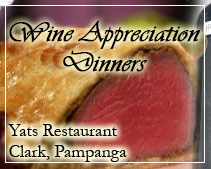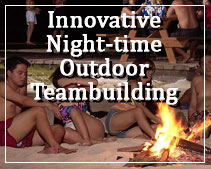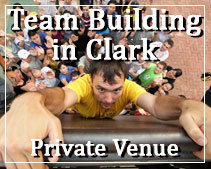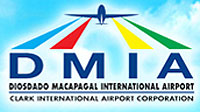Downhill Mountain Biking – 11July12
Downhill biking (DH) is a gravity-assisted time trial mountain biking event. Riders race against the clock, usually starting at intervals of 30 seconds (seeded from slowest to fastest), on courses which typically take two to five minutes to complete. Riders come from all around the world. Riders are timed with equipment similar to that used in Downhill skiing. The placing is determined by the fastest times to complete the course; races are often won by margins of under a second. As the name of this discipline implies, downhill races are held on steep, downhill terrain, resulting in high speed descents, and with extended air time off jumps and other obstacles.[1] The 2010 Downhill World Champion isSam Hill from Australia.[2]
History
The 1st downhill time-trial race took place in Fairfax, California on October 22, 1976 on a fireroad now referred to as Repack Road, due to the need to repack the single rear hub brake after a descent. The bikes used were based on beach cruisers that had a single rear brake that worked by pedalling backwards. A mechanism came into operation causing a conical metal (bronze?) brake shoe to be wound on a thread into a conical metal hub. To prevent a metal to metal brake from snatching it was always filled with grease. Heavy use of the brake during the descent would cause the brake to over heat, melting the grease till it drained from the hub and required repacking. Ten riders descended 1300 feet of Repack in about 5 minutes.[3] The first bikes used for descending were known as “klunkers” or “paperboy bikes”: coaster brake cruisers using balloon tires first imported to America by Ignatz Schwinn.[4] By 1979, two organizers and competitors of the Repack downhill, Charlie Kelly and Gary Fisher founded the company which named the sport, MountainBikes.[5] As mountain biking grew enormously during the 80s, downhill riders continued to use either rigid or limited suspension travel (under 2 inches) bicycles, and purpose made downhill bikes were not made until the 90s. Some of these innovations included dual crown suspension forks and disc brakes, as well as very elaborate frame suspension designs.
Later, riders from all disciplines of cycling began focusing on downhill. Particularly, many BMX racers made the crossover, including champions such as John Tomac (Team Tomac Bikes), and Brian Lopes. Their influence is seen in the increased difficulty of many courses, especially the big jumps and drops aspect of downhill. The coming of age for downhill biking was its inclusion at the first UCI Mountain Bike Championship, held in 1990 in Durango, Colorado.
Downhill bikes and equipment
Downhill body armor for adults and children.
Main article: Downhill bike
Modern race downhill bikes weigh between 14 to 19 kg (30 to 42 pounds), and usually feature full-suspension and frame geometries that lean back farther (slacker geometry) than other mountain bikes. As of 2006, 203 mm (8-inch) is the ‘norm’ for suspension travel however some commercially available big mountain freeride bikes can have over 300 mm (12-inch). Large-diameter 203ŌĆō5 mm (8-inch) hydraulic disc brakes moderate speed. Downhill bikes and freeride bikes are similar but there are some slight differences. Downhill race bikes typically are much lower and have slacker head angles than freeride bikes, so that the bike is more stable at speed and in corners. Freeride bikes have a steeper geometry and a higher bottom bracket height, so that they are better for balance and maneuverability, however freeride bikes sometimes use single crown forks, which are shorter in travel length and lighter than the dual crown forks often used by downhill riders, dual crown forks usually have around 200 mm (8-inch) of travel, and single crown forks are usually around 180 mm (7 in) maximum.
Downhill gear features body armor and full-face motocross-type helmets. Other protective gear such as a neck brace can be added to reduce the risk (by bringing the head to a controlled stop)[6] of neck and spinal injury.
Downhill racing venues
Shuttle service at Interbike 2007.
Many ski areas are converted into biking venues in the summer[7] (such as Whistler Mountain Bike Park and Fernie Alpine Resort just 3 hours from Calgary International Airport, Canada) however there are also many other hills with Downhill Mountain Bike trails built on them. Bikers ride gondolas, trams or chair lifts to the starting point at the top of the mountains. Another method commonly referred to as “Shuttling”, uses motorized vehicles to transport multiple riders to the top of the hill. Normally utility vehicles or 4WDs are driven up off-road tracks to the top of the courses. However, some tracks provide access to ordinary cars – such as Kuranda Downhill in Cairns, which runs down the Smithfield side of the Macalister Range and uses the road as access.
Courses used in competition typically feature several “lines” through or around the most difficult obstacles. For example, the “A line” might be a very direct line with a large jump landing on rocks, the “B line” might be a smaller jump with a clear landing, and the “C line” might completely avoid the obstacles, but be much longer.
Australia
Despite being the flattest continent on earth Australia has produced a large number of internationally successful downhill racers. While the large majority of Australia’s downhill riding and racing is accessed by shuttling in cars, buses or by walking to the top of the track (push runs) the venues at Mount Buller and Thredbo provide lift accessed tracks during the snowless summer. Mount Stromlo, nearby to Australia’s capital city Canberra, hosted a World Cup Round in August 2008 and which is also host to the 2009 world championships as a part of the MTB World Series.
[Austria
Located right in the Alps this country has a lot of places to downhill race. A large majority of Austria's downhill tracks are accessible via lift shuttles. A World Cup track called the "Planai" is located in the city of Schladming. It is about 5 km long with an average descent grade of about 35%.
Bosnia and Herzegovina
Bosnia and Herzegovina is rich with mountains especially around the capital city of Sarajevo, in which a downtown race is held, although MTB and downhill especially are still developing to become known sports in Bosnia and Herzegovina, there are more and more riders which use mountains like Igman, Bjela┼Īnica and others for downhill racing. Currently there are few tracks on Igman, Bjela┼Īnica, Cavljak - Barice, all featured tournaments on international level. UXO's are one of the reasons for slow development of this sport in a country with a such great potential for it.
Canada
Canada is famous for its downhill racing as well as other sorts of mountain biking. The Whistler Mountain Bike Park in Whistler, British Columbia hosts the annualCrankworx and Joyride Huckfest racing events. The province of British Columbia is also home to several other large lift-serviced mountain bike parks, including Sun Peaks in Kamloops, BC, Silver Star Mountain Resort in Vernon, BC, and Fernie Alpine Resort. The North Shore Mountains of North Vancouver, BC, are a famous downhill biking destination in their own right. The popular style of technical downhill freeriding that involves many man-made trail elements originated here. The style is often referred to as "North Shore Style." Canada has produced many world-class mountain bike racers, including downhillers Andrew Shandro. The mount of Bromont, situated in Bromont, Quebec, and Mont-Sainte-Anne near Quebec City are great places for downhill biking
Croatia
Downhill MTB races have been held in Croatia since 1993, when the first competition was organized outside Zagreb, on the same mountain that today hosts the world cup races in alpine skiing. Mountain biking has been consequently banished from popular hiking trails and ski slopes arount the capital, however the art of MTB DH riding flourished in other parts of Croatia, especially in the northern Adriatic coastal region and in northern (continental) part of country. In 2010 the national DH Cup events were held in Buzet (Istria), Samobor (Zagreb area), Pakrac (Slavonia) and Gracisce (Pazin, Istria). Urban DH events are being held in the coastal city of Rijeka.
France
The dramatic scenery of the French Alps is home to many downhill routes[8] and events. The most famous of which is the Mega Avalanche downhill race event in the Alp d’Huez and Bourg d’Oisans region. Another downhill course in the region is Les Deux Alpes which sometimes hosts other downhill events. The downhill courses and events are limited in the area however, because of the alpine winter and snow. The most popular area for downhill in the French alps is the Portes du Soleil including the two more popular resorts of Morzine and Les Gets. Most recently, a world cup was held for the first time in La Bresse. In August 2011, La Bresse will host the sixth round of the UCI World Cup.
Germany
In Germany the landscape is quite diverse, reaching from flatlands in the north to medium-sized mountains in the center to alpine mountains in the south. Downhill tracks in Germany are not as steep as in Switzerland or Canada and the difference from top to bottom is less, but the main parts of an average track are everywhere in Germany. Racing on these short tracks is highly intense and allows no mistakes. Due to the country’s large population the sport has developed quickly in Germany. Number of riders can go up to 600 at races. With 3 cup races, Thuringia, in the middle of Germany, is the center of gravity riding. The most popular race series is the ‘iXS German Downhill Cup’. In Germany is the Europe’s biggest Mountainbike Freeride Festival hold, called iXS Dirt Masters. It includes one iXS German Downhill Cup Round, a 4X Race and a slopestyle contest. It is visited by around 25000 spectators and 1200 riders. In the small town Willingen is a former World Cup Downhill and Four Cross Race Course. The World Cup has been held there in 2005 and 2006. With Germany being a high level industry country, there are many firms producing downhill bikes, such as Last Bikes, Zonenschein, Fusion Bikes or luxury downhill bike manufacturer Nicolai. There are also a lot of firms producing high-end parts like Rohloff, Magura or Tune.
Ireland
Downhill cycling has increased in Ireland over the past 10 years, for example, the National Points Series rounds regularly attract over 250 riders from all over the country.
Irish tracks vary greatly in length and difficulty. Moneyscalp is one of the shorter tracks with times for Elites coming at just over a minute. Other tracks such as Carrick in Co.Wicklow are closer to 5 minutes. Ticknock wood in south Co. Dublin was an important location, particularly for Dublin-based downhillers until Coillte, the Irish semi-state company responsible for forestry destroyed many of its infamous tracks as part of their tree-felling operations. The most famous track of all, ‘The Boneshaker’, is still in frequent use by the downhill, cross-country and hill walking community.
Irish tracks in general are more technical than tracks found elsewhere though ironically there are no official downhill tracks in Ireland. According to the law it is illegal to ride in the forests. All the tracks are built and maintained voluntarily by individuals and mountain biking clubs who take it upon themselves to do so. As downhill mountain biking has become more popular so has the call for more facilities and practitioners of this sport have begun campaigning with the state on this issue. The most common downhill trail in Ireland was Moneyscalp Wood in Co. Down as it was “the home of Irish Downhill”. In honour of the trail Nukeproof named their first full suspension bike the ‘Scalp’. However, in 2010 this trail was destroyed by the local council and a lot of interest was lost from the forest.
National Points Series
The Irish Downhill NPS takes place on tracks the length and breadth of the country. A typical race weekend in the Irish NPS consists of practice day on Saturday with uplifts being provided using a tractor and trailer set-up or a van to bring the racers to the trailhead. Practice is also allowed on Sunday, it being raceday practice ceases at 10:00am and the riders then get their two runs as part of the competition.
Italy
Bardonecchia, one of the Torino 2006 winter olympic venues, converts some of its ski courses and lifts for use by mountain bikers in the summer, and a number of downhill courses are present. Other ski resorts turning to mountain bike parks in summer are Pila, Sestola and Livigno. The area of Finale Ligure, near Genoa, offers year round tracks that end on the seaside, served by shuttles. Among the most famous tracks in the country is the Sanremo Downhill, a rocky, technical and dangerous course won in 2007 by Fabien Barel. The 2008 World Championship were held in Val di Sole.
Norway
Hafjell, a ski resort in the county of Oppland and host of the alpine skiing events (giant slalom and slalom) at the 1994 Winter Olympics, offers a wide variety of courses and tracks for cross country and downhill mountain bikers during summer. Hafjell hosted the 2010 European downhill championships and the 2010 Nordic downhill championships.
Portugal
Portugal is the host country of a Unique variety of down hill races, the Urban Down Hill, known as Down Town races, Lisbon Down Town, held in May is the start of a new down Scene. Places Like Lous├Ż, offer a big variety of single tracks, and big down hill circuits.
Russia
Some of the notable Russian downhill venues are ski-complex “Metallurg” (Bannoe lake, Magnitogorsk), Mashuk and Chaget mountains.
Slovenia
Slovenia’s vast hilly landscape and undamaged nature makes very good conditions for downhill cycling, thus one of the world’s top, not only tracks but riders are also in Slovenia. The famous tracks that are included in the world cup are at ski resort Kranjska Gora in north-west tip of Slovenia, while the other track is on ski resort hill Pohorje at Slovenia’s second largest city Maribor. The Pohorje track has been considered as the second best in the world.
South Africa
Downhill racing is not such a big sport in South Africa, but is rapidly growing. South Africa boasts some great tracks and riders, especially from the Western Capeand the Pietermaritzburg area in Kwa-Zulu Natal, the hometown of Greg Minnaar. In the Western Cape, the best tracks are Edeouth and Jonkershoek inStellenbosch, Playgrounds in Paarl, Sir Lowry’s Pass near Somerset-West (hometown of Andrew and Jonty Neethling), Zevenwacht near Kuilsriver and Witfontein in George. They provide quite technical, but fun courses. Ferncliff and World’s View are great in Pietermaritzburg. Helderkruin (West of Johannesburg), Klapperkop (Google map) in Pretoria and Gillooly’s Farm in Johannesburg. South Africa held the first round of the 2009 UCI World Cup, which was in Pietermaritzburg(Greg Minnaar’s hometown).
Sweden
With the Caledonian mountains forming the borderland with Norway this country has places to downhill race. The majority of Sweden’s notable downhill tracks are situated around ├ģre, accessible via lift shuttles. In 1999 ├ģre was the host for the UCI Mountain Bike & Trials World Championships and it hosted the Nordic Championships in 2007. There are numerous graded biking trails down the ├ģreskutan fell.
Sweden’s most southerly DH bike park is called Vall├źsen Bike Park [1] and is located on the north side of the Halland ridge between Sk├źne and Halland. Vall├źsen opened in 2008 and attract riders from not only Sweden but also Denmark due to its relatively close location to Copenhagen. Vall├źsen holds an annual DH race at the end of the season called the Vall├źsen DH Challenge.
Switzerland
Located in the Alps and surrounded by the downhill nations of France, Germany, Italy and Austria it is kind of a center for the European downhill scene. You can find tracks in or near every city with high quality and a steep descent. It has several World Cup tracks like “Champery” or “Portes de Soleil”. Switzerland is the home of parts manufacturer DT Swiss and frame manufacturer BMC.
United Kingdom
Within the UK most of the main downhill tracks are in Scotland or Wales, as these countries are more mountainous. Fort William in Scotland is Britain’s only World Cup standard track and was the venue for the 2007 World Championships. The main series in the UK is the Halo BDS (British Downhill Series) organised by Si Paton (Descent-Gear.com) and Dave Franciosy. Many of the Halo BDS rounds take place in Wales including the rack at Llangollen. Moelfre in Mid Wales. In Scotland they are at Glencoe and Fort William. The UK has produced dozens of successful Downhill mountain bikers including Steve Peat, Gee Atherton Marc Beaumont, Josh Bryceland and Brendan Fairclough.
United States
The Sea Otter Classic, held each April at Laguna Seca near Monterey, California, is a major riding event that opens the racing season (course map). The 2006 U.S. National Championships were held at the Infineon Raceway in Sonoma, California. In 2007 and 2008 the U.S. National Championships were held in Mt. Snow, Vermont. In 2009 and 2010 the U.S. National Championships were held at (SolVista Bike Park in Colorado.) Plattekill Mountain in the Catskills, Mammoth Mountain, the Northstar at Tahoe, Brian Head Resort, Attitash and Deer Valley ski resorts, and Moab UT are also well known to mountain bikers. In the southeastern United States, Snowshoe Mountain is well known for its extensive mountain bike park, camps, and even freeriding areas during the summer.[9] Vail, Colorado was the site of the 1994 Downhill World Championship. The trail was renamed “’94 Downhill,” and is still ridden by many downhill bikers today. It was considered one of Vail Mountain’s hardest venues.
Aaron Gwin is currently the U.S’s top ranked racer on the World Cup Circuit. In 2010 he finished his World Cup Campaign with a 4th place world ranking and a 4th place at the UCI mountain bike world championships. He races for the Yeti/Fox Racing Shox World Cup Team along with teammate Jared Graves.
The Diablo Freeride Park located in Vernon, New Jersey is a downhill facility on the East Coast of the United States. Historically they have hosted the US Open of Mountain Biking, which is the premier US gravity race. The 2010 U.S. Open had $50,000 in cash and prizes and a $7500 purse for men’s pro champion. Diablo also hosts their own series of competitions called the Gravity Series.[10]
Venezuela
El Volcan, a small mountain in the southeastern, touristic El Hatillo Municipality of Caracas, has a Downhill course that has about 500 meters of vertical drop, it is used by hundreds of riders a day during dry and wet weather, mostly on weekends. El Volcan is the representative [Downhill] Track of Caracas city. The course is open to the public and riding is neither specifically allowed nor prohibited by law. The trails are also used by hikers all week long. Shuttles are about 10 Venezuelan bolivars per trip, they run from the parking lot of a Farmatodo drug store in La Boyera, up to the summit using public avenues and paved roads, taking from 15 minutes to 30 minutes depending on traffic on the area. The course apart from being used mostly for recreational purpose, also has been used for irregularly scheduled downhill races due to the lack of organization in the riders community.
Governing bodies
The Union Cycliste Internationale is governing body for downhill mountain bike racing. Racers qualify to compete in World Cup races by earning UCI points, which are gained by being a top ten finisher in certain races, usually national.
In the U.S., NORBA, as part of USA Cycling, runs the National Mountain Bike Series, and the NCCA is the governing body for collegiate cycling. In the UK, British Cycling controls mountain biking as well as road and BMX. In Australia, MTBA controls all disciplines of Mountain biking.
Source: http://en.wikipedia.org/wiki/Downhill_mountain_biking
Residents of Manila and Angeles City Pampanga are looking for a safe and convenient place to celebrate special occasions or take a shot vacation in the Philippines. Many travel north to Clark to swim at Clearwater Beach Resort which also has lake and picnic grounds to unwind and relax, a very good way to spend quality time with the family and children. Fine dining Yats Restaurant offers sumptuous cozy Christmas dinner, for wine lovers, Clark Wine Center provides exciting shopping options.
Clark Philippines also known as Clark Freeport Zone is now the preferred destination for foreign and local investments because it offers many attractive advantages including tax, safety and its own international airport
The advantages for making the move from a country like UK, USA, Japan, Korea, Hong Kong, Singapore and Australia for example, to a country like Philippines are enormous. Heavily in your favor are factors like asset values differentials and substantial reduction in cost of living. Selling off your home probably gives you enough capital to not only live comfortably in a bigger property in Philippines but also to re-establish yourself in the business community by starting a business here too.
This web site contains articles and information that will be helpful to visitors, residents and tourists traveling out of town from Manila on a short getaway to Subic, Angeles City, Pampanga and Clark Philippines. There are several web sites that contain information that might also be pertinent to what is happening in North Luzon, Subic, Tarlac, Pampanga, Clark Freeport Philippines.
Wedding couples looking for wedding reception venues and beach wedding venues can log on to this Philippines Wedding Venue web site for free information and assistance:
For assistance with lodgings, accommodations, hotels and resorts near Manila in Subic, Pampanga, Angels City and Clark Philippines log on to http://www.HotelClarkPhilippines.com
While in Clark, one might as well add to the itinerary a visit to the famous Clark Wine Center, the largest wine shop in Philippines which offers over 2000 selections of fine vintage wine from all wine regions, vintages spanning over 50 years covering all price ranges.
http://www.ClarkWineCenter.com
If this article about Clark is useful to you, please click here to contact us to tell us what more you wish to know about this article or Clark Philippines, which can be something about Clark investment, about Clark resorts, about Clark Swimming and Leisure or simply general news about Clark.
Please send questions to Editor@ClarkPhilippines.com. Leave your name, email address, contact numbers and we will get back to you as soon as possible. Information received will not be disclosed.













